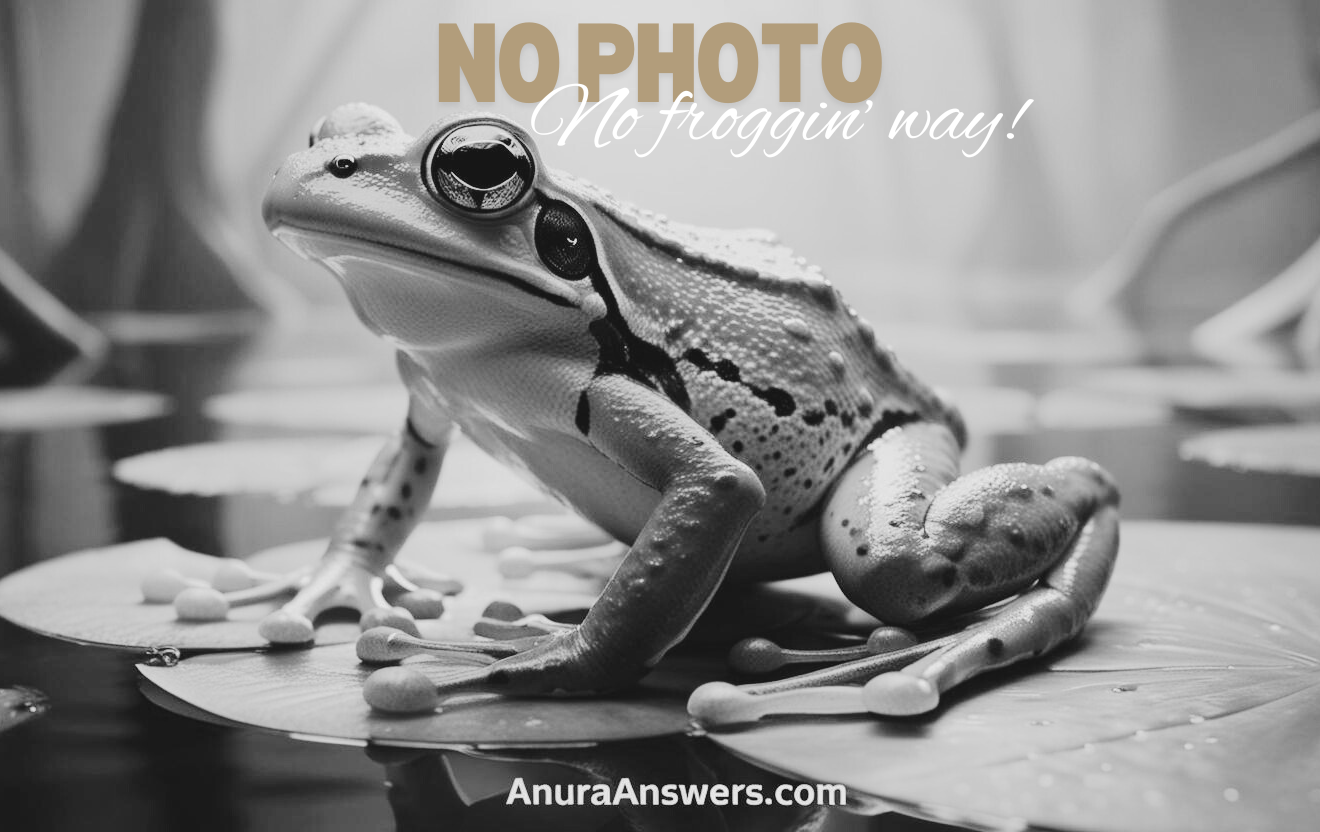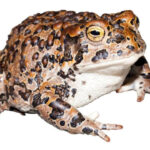- Adhaerobufo nasicus: The Enigmatic Rainfrog of the Andes
- Taxonomy and Classification
- The Secluded Realm: Natural Habitat of Adhaerobufo nasicus
- Physical Characteristics: A Master of Quiet Camouflage
- Secret Lives: Behavior and Life Cycle
- Playing Their Part: Ecological Role of Adhaerobufo nasicus
- Challenges and Conservation Status
- Cultural and Scientific Significance
- A Hidden Jewel Worth Protecting
Adhaerobufo nasicus: The Enigmatic Rainfrog of the Andes#
Hidden amidst leaf litter in shadowy montane forests, a remarkable little frog dwells quietly, almost unnoticed—a species whose secrets researchers continue to unravel. Known scientifically as Adhaerobufo nasicus, this cryptic amphibian is a creature of subtle beauty and ecological importance. Commonly referred to as the Sharp-snouted Sticky-toed Frog, this fascinating amphibian is not only captivating in appearance but also uniquely adapted to its hidden environment.
Despite its diminutive size and elusive habits, Adhaerobufo nasicus is a compelling subject of study and conservation—and a charming representative of one of the Andes’ many hidden wildlife treasures. Often overshadowed by its more flamboyant cousins, this curious species captivates those who take the time to notice its subtle splendors. Let’s delve deeper into the natural history, biology, and conservation narrative of this intriguing amphibian.
Taxonomy and Classification#
Placed within the family Bufonidae, popularly known as true toads, Adhaerobufo nasicus holds a unique position due to some distinguishing morphological traits. Sharing the Bufonid lineage with the famous common toads found in gardens and ponds worldwide, Adhaerobufo nasicus nonetheless diverges in several aspects of its anatomy and behavior, warranting special attention from taxonomists.
Formally described by Cannatella in 1986, Adhaerobufo nasicus represents a genus containing only this single known species, highlighting its exceptional evolutionary position. Although its discovery garnered moderate interest, it remains understudied—making its conservation status and detailed ecological role somewhat enigmatic, even among amphibian researchers.
The Secluded Realm: Natural Habitat of Adhaerobufo nasicus#
Tucked away in the lush, cloud-covered slopes of the eastern Andes of Peru, Adhaerobufo nasicus thrives in montane cloud forests approximately 1000 to 2000 meters above sea level. Here, dense vegetation, abundant moisture, and thick layers of leaf litter create a perfect microhabitat where these frogs can comfortably exist under cover, avoiding predation and extreme conditions.
A Life Spent Under Leaf and Moss#
These regions provide constant humidity and concealing layers necessary for amphibian survival, especially for small, moisture-dependent species like Adhaerobufo nasicus. The microclimates of these cloud forests offer a stable temperature and humidity range year-round, an essential quality considering amphibians’ sensitivity to changes in their immediate environment.
Observations suggest that Adhaerobufo nasicus prefers dense vegetation close to streams or humid gorges but remains terrestrial primarily, rarely venturing far into open areas. While infrequently encountered due to their secretive behavior, they illustrate perfectly the intricate connections between amphibians and their precise habitats—a delicate evolutionary dance millions of years in the making.
Physical Characteristics: A Master of Quiet Camouflage#
Appearing as if shaped directly from damp forest soil, Adhaerobufo nasicus stands out with a deeply terrestrial aesthetic, subtly blending into the leaf litter it calls home. Measuring approximately 25 to 30 millimeters from snout to vent, it embodies the perfect balance between small size for concealment and functional adaptations that aid survival.
Adapted to Blend In#
Its coloration ranges from earthy brown, greyish green, or even rust-red, usually accompanied by patterns of subtle patches, streaks, or speckled dots, precisely mimicking decaying leaves and twigs. The skin texture is slightly granular, featuring wart-like bumps, enhancing its camouflage further by replicating the irregularities of organic forest debris.
The most notable feature inspiring its common name is the distinctively pointed snout—a diagnostic characteristic differentiating it from related species. The snout gives it a profile ideal for burrowing and sifting through decomposing leaf litter for prey, further emphasizing its specialized niche.
The Mystery of Its ‘Sticky’ Feet#
The popular moniker “Sticky-toed Frog” alludes intriguingly to tiny adhesive-like structures visible on their toes. Although not as pronounced as those in arboreal frogs, their slight adhesiveness likely aids secure movement through slippery leaf litter and moss-covered terrain. This adaptation allows them to efficiently hunt crawling prey like small invertebrates without sacrificing their stealthy movements or camouflage efficiency.
Secret Lives: Behavior and Life Cycle#
Much of the intrigue surrounding Adhaerobufo nasicus originates from limited observation opportunities due to its shy and retiring habits. Primarily nocturnal, much of its day is spent concealed beneath damp logs or within the safety of leaf litter, emerging under cover of darkness.
Sophisticated Hunters of Tiny Prey#
At night, they stealthily surf through the forest floor in search of tiny arthropods, including ants, beetles, collembolans, and termites. Their sharp vision and quick movements allow them to dart swiftly forward, capturing prey with pinpoint accuracy. Like many smaller amphibians, they are ambush predators, relying on their concealed presence to surprise their prey effectively.
Mating Rituals Shrouded in Fog#
Surprisingly little is known about their breeding habits, adding to their aura of mystery. It is widely presumed, based on knowledge of closely related species, that Adhaerobufo nasicus‘s mating coincides with periods of increased rainfall. During these moist periods, males likely emit subtle calls, drawing females near secluded, shallow temporary water bodies or moist depressions to lay eggs.
Eggs typically hatch quickly into free-swimming tadpoles, adapted to complete development within the transient ponds birthed by cloud forest rains. Tadpoles metamorphose swiftly to terrestrial juveniles, minimizing their vulnerability in these temporary aquatic habitats.
Playing Their Part: Ecological Role of Adhaerobufo nasicus#
Though small and inconspicuous, Adhaerobufo nasicus plays a critical ecological role within its ecosystem. Like other amphibians, they serve as both predator and prey, occupying a crucial mid-tier trophic role.
An Essential Link Within Food Webs#
By preying upon abundant arthropods, the sharp-snouted frog acts as a natural pest controller, regulating insect populations and contributing indirectly to forest health. Conversely, their place in the ecosystem exposes them to predation by birds, snakes, and small mammals—a relationship underscoring their importance in sustaining biodiversity.
Indicators of Environmental Health#
Amphibians are widely recognized as sensitive bioindicators, their permeable skin and aquatic developmental stages making them susceptible to pollutants and environmental changes. Thus, the status of populations like Adhaerobufo nasicus provides researchers invaluable early warnings of ecological disturbances.
Challenges and Conservation Status#
Currently regarded by the IUCN as Data Deficient—which reflects the limited knowledge about population trends and specific ecological needs—Adhaerobufo nasicus faces potential threats tied mostly to habitat disturbance and climate instability. Increasing deforestation for agriculture, timber extraction, and mining activities present severe risks to their habitat integrity, potentially amplifying stress on their population.
Climate unpredictability, shifting rainfall patterns, and increased disease risks from amphibian fungal pathogens such as chytrid fungus compound the mounting pressures facing this distinctive species. Conservationists advocate increased research, habitat protection, and monitoring programs essential for maintaining viable populations.
Cultural and Scientific Significance#
Though relatively unknown culturally, Adhaerobufo nasicus symbolizes the hidden biodiversity treasure troves represented by cloud forest regions. Each discovery contributes incrementally but vitally to our deeper understanding of amphibian ecology, physiology, and evolutionary history.
Moreover, studying such sensitive species helps gauge ecosystem health—crucial for environmental conservation and strategies addressing global biodiversity loss.
A Hidden Jewel Worth Protecting#
Adhaerobufo nasicus embodies the fascination and mystery associated with biodiversity tucked away in the Andes’ cloud forests. With continued attention and conservation dedication, we can ensure the preservation of its rich ecosystem, safeguarding its future and maintaining the intricate balance of life they symbolize. Ultimately, each of us has a role—supporting conservation, advocating for habitat protection, and striving to learn more about remarkable yet enigmatic species like Adhaerobufo nasicus.







